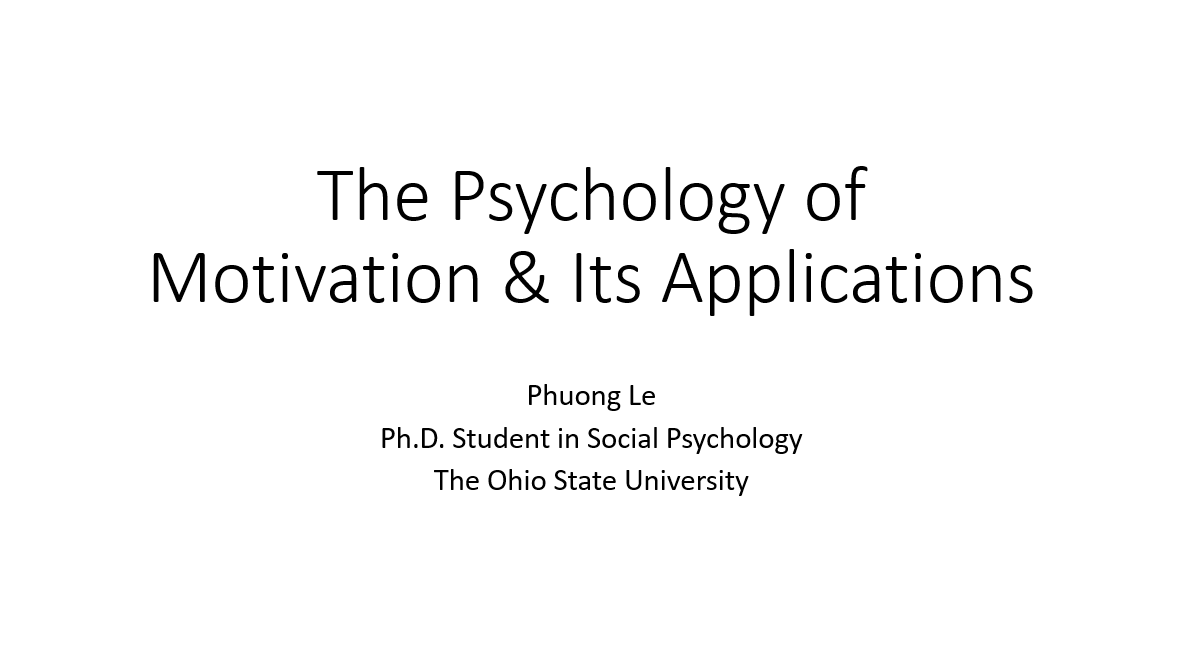 We all have hopes and dreams which may be difficult to reach. And then we have smaller, easier, more doable goals and tasks. Still, we sometimes fail to finish those tasks and some goals are never achieved. One of the main reasons for that is “lack of motivation”. According to the survey SWEC did in the beginning of this academic year, this issue turns out to be quite common among our med students. On Sunday December 19th, Ms. Phuong Le – one of SWEC consultants from the US – gave us an in-depth talk about goals and motivation.
We all have hopes and dreams which may be difficult to reach. And then we have smaller, easier, more doable goals and tasks. Still, we sometimes fail to finish those tasks and some goals are never achieved. One of the main reasons for that is “lack of motivation”. According to the survey SWEC did in the beginning of this academic year, this issue turns out to be quite common among our med students. On Sunday December 19th, Ms. Phuong Le – one of SWEC consultants from the US – gave us an in-depth talk about goals and motivation.
Ms. Phuong Le is currently a Ph.D. student in Social Psychology in The Ohio State University. Her thesis is on goals and motivation, so we have learned a lot from her research experience.
Motivation is defined as “the attraction to or repulsion from something; energy to move in a certain direction” (Higgins, 2006) or in short, we can see it as a mental force that pushes us to our goals. Thus, motivation and goals are highly related to each other and both affect our process of goal pursuing. Certain kinds of goals relate to certain kind of motivation and each person has his/her own suitable goal-motivation combination. More than that, each kind of motivation is more suitable than others in specific settings and scenarios. On the other hand, long term goals can be divided into short term goals, which are easier for us to achieve because of better kind of motivation.
During the training session, Ms. Phuong Le also added some activities about motivation in SWEC members’ lives and work. Those reflections not only made the training more interactive but also clarified the complex concept. Last but not least, Ms. Phuong Le arranged private meetings with each member for post-training consultancy in order to help us deal with the obstacles and answer remaining questions.
The training was not only full of practical knowledge, but also inspiring. SWEC members are trying to apply those techniques to improve our way of studying, working, and hopefully, we can spread this knowledge to every student who needs it.
You can find the slides of Ms. Phuong’s presentation here.














